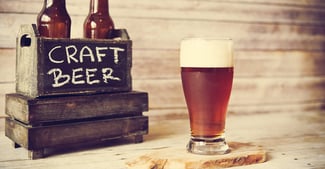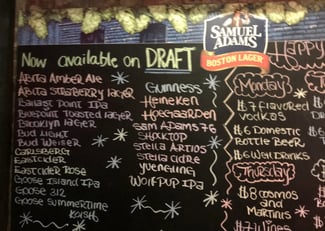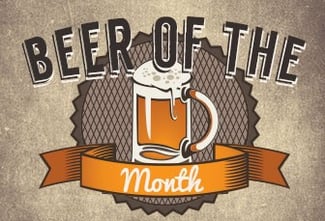The bar industry has undergone a major shift in recent years. As the public has become more discerning regarding the types of products they desire, many bars and restaurants have responded by catering to the sophisticated tastes of their patrons.
While you can still find options such as Budweiser or Coors Light at many bars, these products are often accompanied by a wide range of craft beers. Similarly, many bars are finding that offering signature cocktails and other craft beverages is an essential way to provide the options desired by customers.
 The craft beer and cocktail trend has also impacted the bar inventory process, making it much more complex than it used to be. There are several reasons for this:
The craft beer and cocktail trend has also impacted the bar inventory process, making it much more complex than it used to be. There are several reasons for this:
- Drinks are becoming as complicated as food – The growth in popularity of craft beer and cocktails has resulted in drinks becoming as complicated and expensive as food items. A lot more goes into the creation of these drinks. Often, bartenders are combining much more than a single liquor and mixer. These craft cocktails contain multiple ingredients and flavors to ensure they are truly unique, taste great and provide the best possible experience for your customers.
- Greater product selections – Traditionally, bars used to have 6-10 beers on draft. Today, it’s common to see many bars carrying 20-30 draft beers in order to provide their customers with enough options to satisfy their diverse palettes.
- Greater rotations – Rotating your draft beer selection and updating your signature drinks allows customers to try a wider variety of products and positions your bar as a location that is always providing something new and interesting to explore.
- Higher costs per ounce – Upscale cocktails and craft beers tend to have a higher cost than domestic drafts and traditional mixed drinks.
All of these factors are increasing the cost, risk and complexity of managing your bar inventory. In particular, the decision to rotate your product selection can have a significant impact on this process. While there are many benefits associated with rotating your product selection, it’s important to be strategic about the way you approach product rotation to ensure it is done efficiently and effectively.
Benefits of Product Rotation
 There is a reason why so many bars have started rotating their product selection. This practice provides several important benefits:
There is a reason why so many bars have started rotating their product selection. This practice provides several important benefits:
- Provides fresh, unique experiences to customers – If there’s always something new to try, people are more likely to come into your bar on a regular basis. They will have a greater incentive to explore the current options on your menu before they are replaced by the next new wave of products.
- Creates opportunities for staff engagement and knowledge – If you’re educating your staff about the selections you carry, they can provide a better customer experience by explaining the unique characteristics of the new items that have recently been added to your drink menu. This caters to an increasing number of bar patrons who are interested in learning about the drinks they are ordering.
- Eliminates price expectations – In the case of wine (and to a slightly lesser extent craft beer), if you’re picking lesser known products or regularly switching out the products on the menu, customers won’t have price expectations about what these drinks should cost. This can allow you to price these products in a manner that improves your margins since customers don’t have a general sense of what these drinks should cost.
Frequent Product Rotations Come at a Cost
There are also certain downsides associated with frequent product rotations:
- Increased transactional costs – Every time you change out products, it requires menu updates, staff training and updates to your POS system. These items take time to complete and add some costs to your operating expenses.
- Lack of product knowledge – It’s much easier for your staff to be knowledgeable about your product selection when these products remain consistent over time. The more you switch out your products, the more you require your staff to put in time to learn about the new items being offered.
There is limited time to educate your staff about product updates If you rotate your products too often, you may increase the likelihood that they will be less familiar with the nuances of these new products when your customers ask questions. For this reason, we recommend having a smaller product selection that the staff can talk passionately about, describe in detail and upsell than an endless selection that the staff can’t possibly learn about in enough detail to talk intelligently with customers when they ask questions. - Increased confusion – Your customers are more likely to be confused about what to order if the product selection is overwhelming and always changing rapidly. Your staff is more likely to experience confusion and ring in the wrong items when you are constantly switching the items on your menu.
From a profitability perspective, the biggest downside to frequent product rotations is increased shrinkage. There are several reasons why you expose yourself to a greater risk of shrinkage when you rotate products all the time:
- It’s harder to track items during the inventory process – Your ability to minimize shrinkage is directly related to how well you can precisely track and compare how many servings of each product are poured vs. sold during each inventory period. It becomes much harder to track this usage when products are being changed out all the time.
- Draft beer natural waste increases – Every time you switch an existing keg for a keg carrying a different type of beer, you’re going to increase the amount of waste experienced because you have to flush out the line to get rid of the old beer before you start pouring the new product through that line. If you’re just switching out a keg for a new keg of the same beer, it will reduce that level of draft beer waste
Seasonal Rotations Help You Leverage the Benefits of Product Rotation while Minimizing the Downsides
 In order to minimize these issues, we recommend doing seasonal or quarterly rotations. Pick your set of products for a three month (or if you prefer, a six month) period. Keep them fixed for this time and then establish a process for how you will decide what your new products will be for the next rotation period.
In order to minimize these issues, we recommend doing seasonal or quarterly rotations. Pick your set of products for a three month (or if you prefer, a six month) period. Keep them fixed for this time and then establish a process for how you will decide what your new products will be for the next rotation period.
There are several reasons why you’ll benefit from a seasonal rotation strategy:
- More efficient process – Rather than change a few products each week, you’ll change a larger number of products all at once and keep these items on the menu for a longer period of time. This allows you to do all the menu updates, POS updates and staff training at the same time. As a result, this process will be much more streamlined and efficient than if you have to do it every couple of weeks to accommodate product rotations that occur once or twice a month.
- Improved decision making – You can look over a three (or six) month period to see what types of products and what price points are selling best. This can allow you to make smarter decisions about which products to keep on your menu and which should get rotated out for new selections. It can also help you make more informed decisions about the new products you want to add during the next seasonal rotation.
- Reduces the number of meetings with liquor reps – You don’t have to continuously engage in ongoing discussions with your liquor reps about what products are being added. Instead, you can have these conversations on a quarterly basis when you start the process of deciding what products are being discontinued and which ones you’d like to add.
While it’s good for your managers to be learning about new products and meeting with liquor reps, it can waste a lot of time that could be used to address other important aspects of your bar’s day-to-day operations. It’s better for your managers to focus on the staff execution each shift and making sure your bar is providing an excellent experience for your customers. This is a much more effective use of their time than to be tasting new products every week in an effort to stay on top of a rapid rotation schedule. - Greater price leverage – If you’re able to keep a product in your rotation for a longer period of time and you have a good idea of the sales volume for this product, it gives you an opportunity to negotiate a better deal on cases of these products. This is an easy way to lower your liquor cost.
Are there Times when Frequent Product Rotation is Better?
There may be certain instances when rotating products more frequently makes sense:
- Wine/beer of the month offerings
- Catering to a huge craft beer clientele
 Offering a wine or beer of the month can be an effective way to keep customers coming in regularly. These new options every month provide something interesting and exciting that people can only experience for a limited time. However, it’s important to be strategic about the way you set up your wine/beer of the month program:
Offering a wine or beer of the month can be an effective way to keep customers coming in regularly. These new options every month provide something interesting and exciting that people can only experience for a limited time. However, it’s important to be strategic about the way you set up your wine/beer of the month program:
- Negotiate a set amount of a particular wine or beer
- Buy the end of a batch where there are only a few cases/kegs left
This allows you to get a cheaper price on this product from the distributor since they are trying to get rid of the last few cases or kegs. You can then increase your profit margin on these items by selling them at a premium price due to the limited supply. The key to making this process successful is to do it on a regular schedule (once a month), instead of haphazardly throughout the year.
If your bar focuses on craft beers, you may want to rotate your taps more frequently than on a quarterly basis. Just be careful about how quickly you cycle through these options. There can be benefits to having a faster rotation of draft selections if you’re catering to a large craft beer clientele, but make sure you don’t rotate through these items so fast that your regulars don’t have an opportunity to taste them before they’re gone.
One good strategy is to keep some of your most popular draft options on the menu at all times and only rotate a portion of your taps. This will ensure that your best selling items remain available to your customers, and it reduces the amount of staff training it will take for your bartenders to remain knowledgeable about every beer you serve.
However you approach this process, you need to think about the optimal time period to keep each option on rotation before switching. By making a conscious, strategic decision about this time period, you can ensure your processes and operations remain as efficient as possible. Once you figure out what works for your bar, stick to that plan instead of being random in your efforts.
If you’d like to learn more about how Bar-i can help you streamline your operations and maximize profits, please contact us today to schedule a free consultation. We serve bars and restaurants nationwide from our offices in Denver, Colorado.


-1.png)